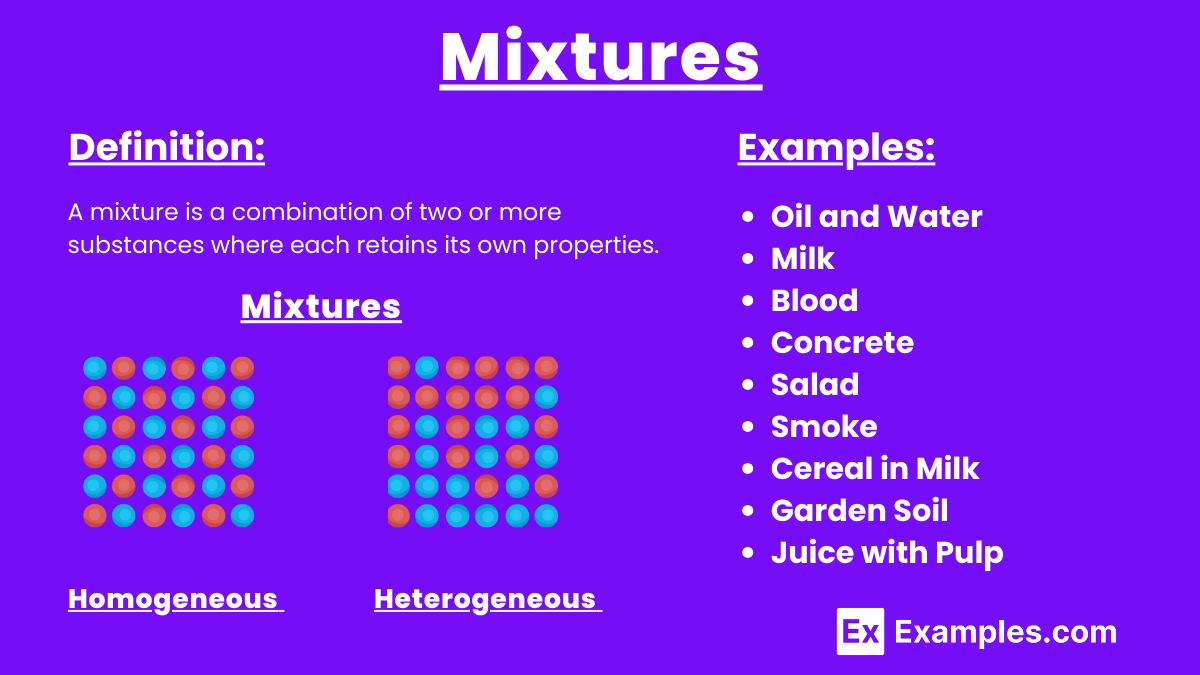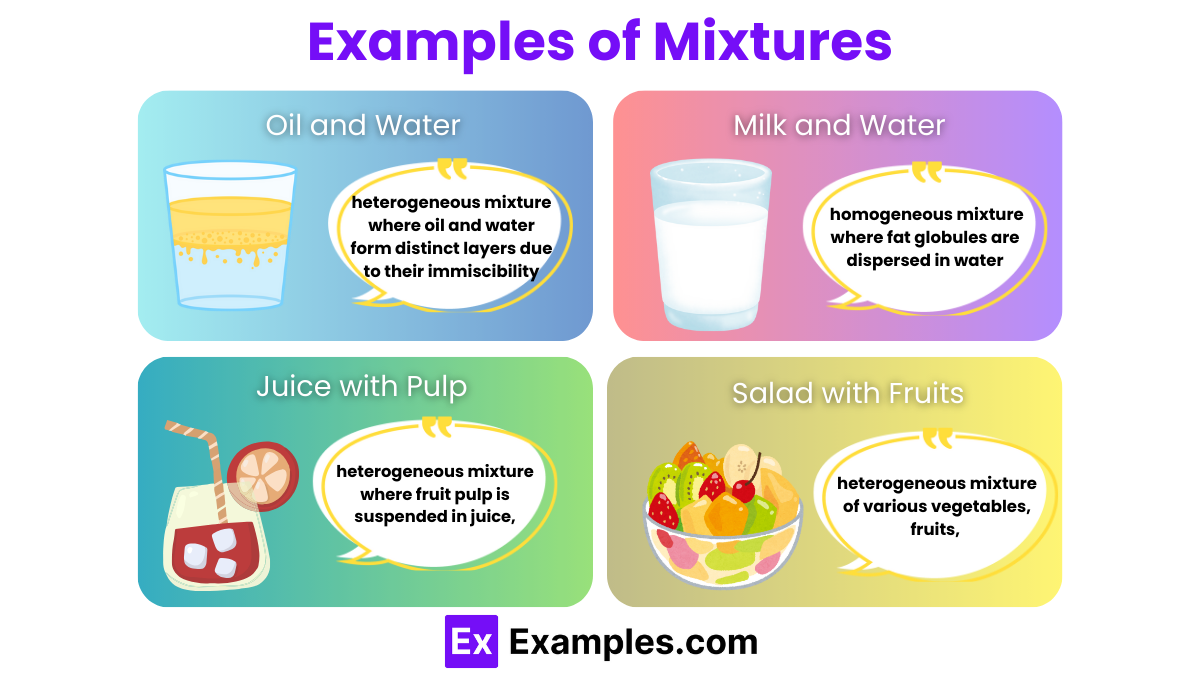What is a mixture?
A single pure substance
A combination of two or more substances that are chemically bonded
A combination of two or more substances that are not chemically bonded
A compound


A mixture is a combination of two or more substances where each substance retains its individual chemical properties. Mixtures can be either homogeneous Mixtures , where the components are uniformly distributed (e.g., saltwater), or heterogeneous, where the components are not evenly distributed and can be easily distinguished (e.g., salad). Unlike compounds, the components of a mixture can be separated by physical means such as filtration, distillation, or decanting.
A mixture is a combination of two or more substances where each retains its own properties. These substances can be separated by physical means. Mixtures can be homogeneous, with uniform composition like saltwater, or heterogeneous, with non-uniform composition like a salad.

Mixtures are fundamental to many natural and industrial processes, playing a crucial role in various aspects of daily life and scientific advancements. Here are some key points highlighting the importance of mixtures:
Yes, mixtures can be separated into their individual components using physical methods such as filtration, distillation, or magnetic separation.
An example of a homogeneous mixture is air, which is a uniform mixture of gases like nitrogen, oxygen, and carbon dioxide.
An example of a heterogeneous mixture is a pizza, where you can see and separate the individual toppings like cheese, pepperoni, and vegetables.
A solution is a type of homogeneous mixture where one substance (solute) is dissolved in another substance (solvent), like sugar in water.
A suspension is a type of heterogeneous mixture where solid particles are dispersed in a liquid or gas but eventually settle out, like sand in water.
A colloid is a type of mixture where tiny particles are dispersed throughout another substance but do not settle out, like milk or fog.
You can separate sand and iron filings using a magnet to attract the iron filings away from the sand.
To separate a saltwater solution, you can use distillation, which involves boiling the water and condensing the steam back into liquid, leaving the salt behind.
Yes, mixtures can have varying compositions, unlike pure substances which have fixed compositions. The proportions of components in a mixture can change.
Yes, tap water is a mixture. It contains water and dissolved substances like minerals and gases, making it a homogeneous mixture.
Text prompt
Add Tone
10 Examples of Public speaking
20 Examples of Gas lighting
What is a mixture?
A single pure substance
A combination of two or more substances that are chemically bonded
A combination of two or more substances that are not chemically bonded
A compound
Which of the following is a homogeneous mixture?
Salad
Sand and salt
Air
Granite
What type of mixture is oil and water?
Homogeneous
Solution
Suspension
Colloid
Which process is commonly used to separate a mixture of sand and salt?
Filtration
Distillation
Chromatography
Evaporation
What is the main difference between a solution and a suspension?
Solutions are heterogeneous; suspensions are homogeneous.
Solutions are homogeneous; suspensions are heterogeneous.
Solutions have larger particles than suspensions.
Suspensions are mixtures of gases.
What technique is used to separate dissolved salts from water?
Filtration
Evaporation
Centrifugation
Chromatography
What kind of mixture is milk considered to be?
Solution
Suspension
Colloid
Pure substance
How can you separate a mixture of iron filings and sulfur powder?
Filtration
Magnetic separation
Distillation
Centrifugation
What is the primary method used to separate colors in ink?
Filtration
Distillation
Chromatography
Centrifugation
What type of mixture is ketchup?
Solution
Colloid
Suspension
Emulsion
Before you leave, take our quick quiz to enhance your learning!

